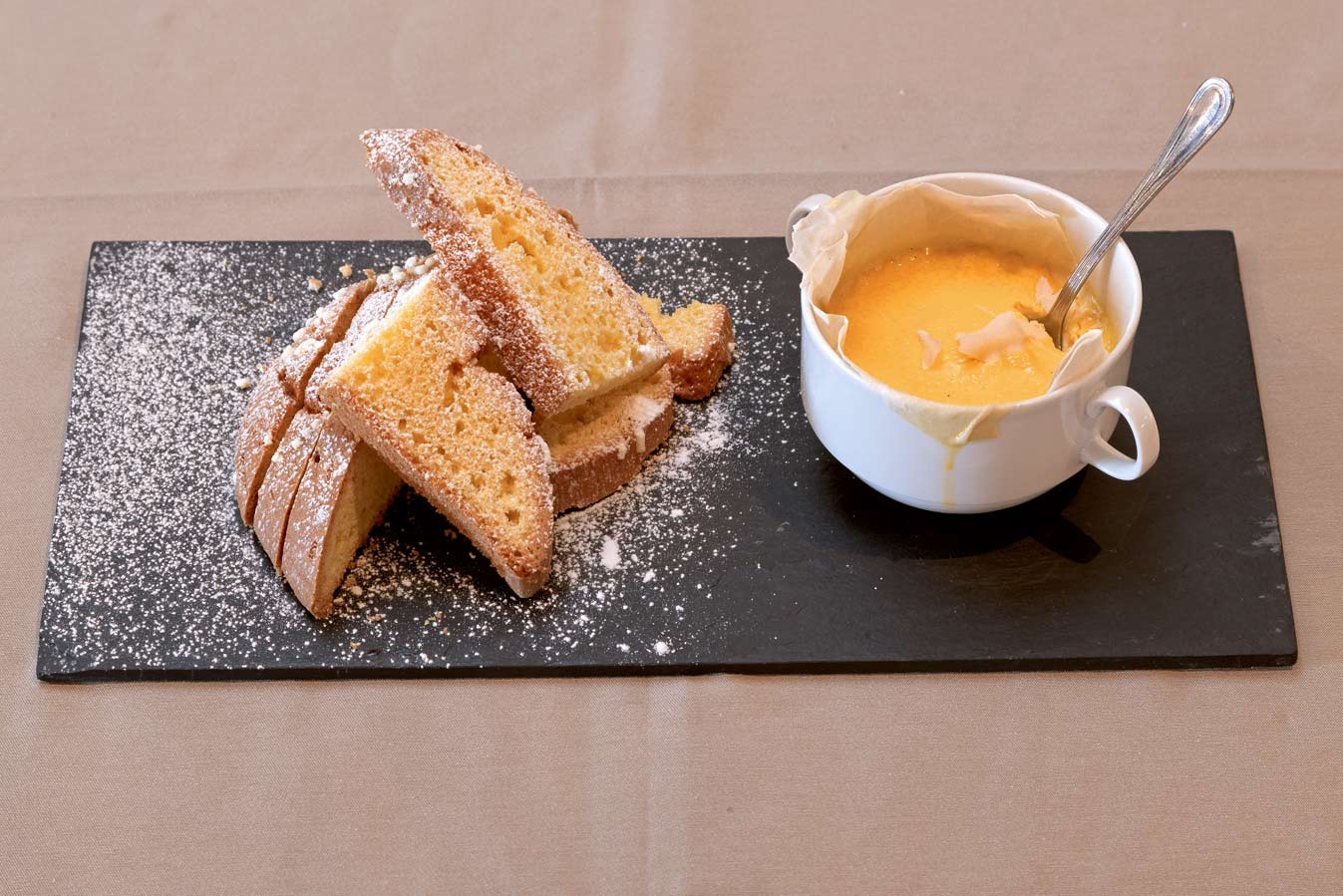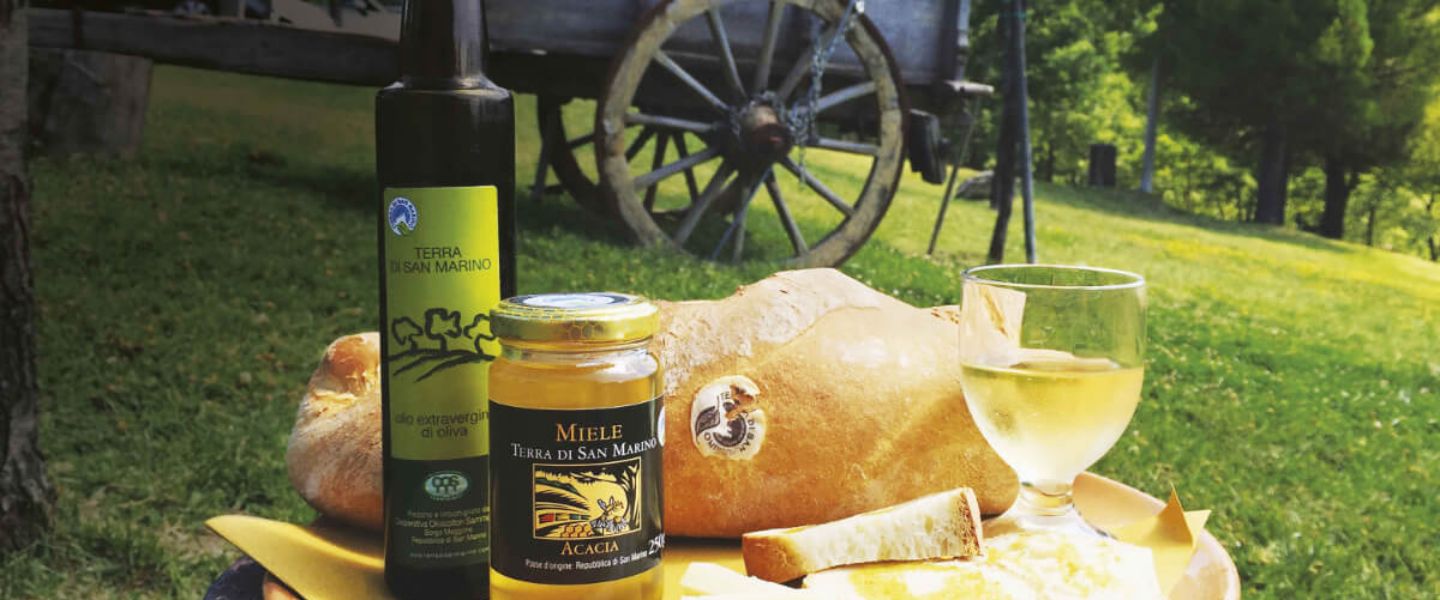
Gastronomy of San Marino
A journey through rural tradition and culinary specialties
The authentic flavours of San Marino
The land's products
Over the years, the Republic of San Marino has preserved a gastronomic tradition bound to what its own land produces.
Fields of cereals, vineyards and the entire agricultural landscape surrounding Mount Titano form the pillars of a culinary tradition that has never stopped pulsating.
Every single product reflects love and attention to quality, satisfying even the most demanding of palates.
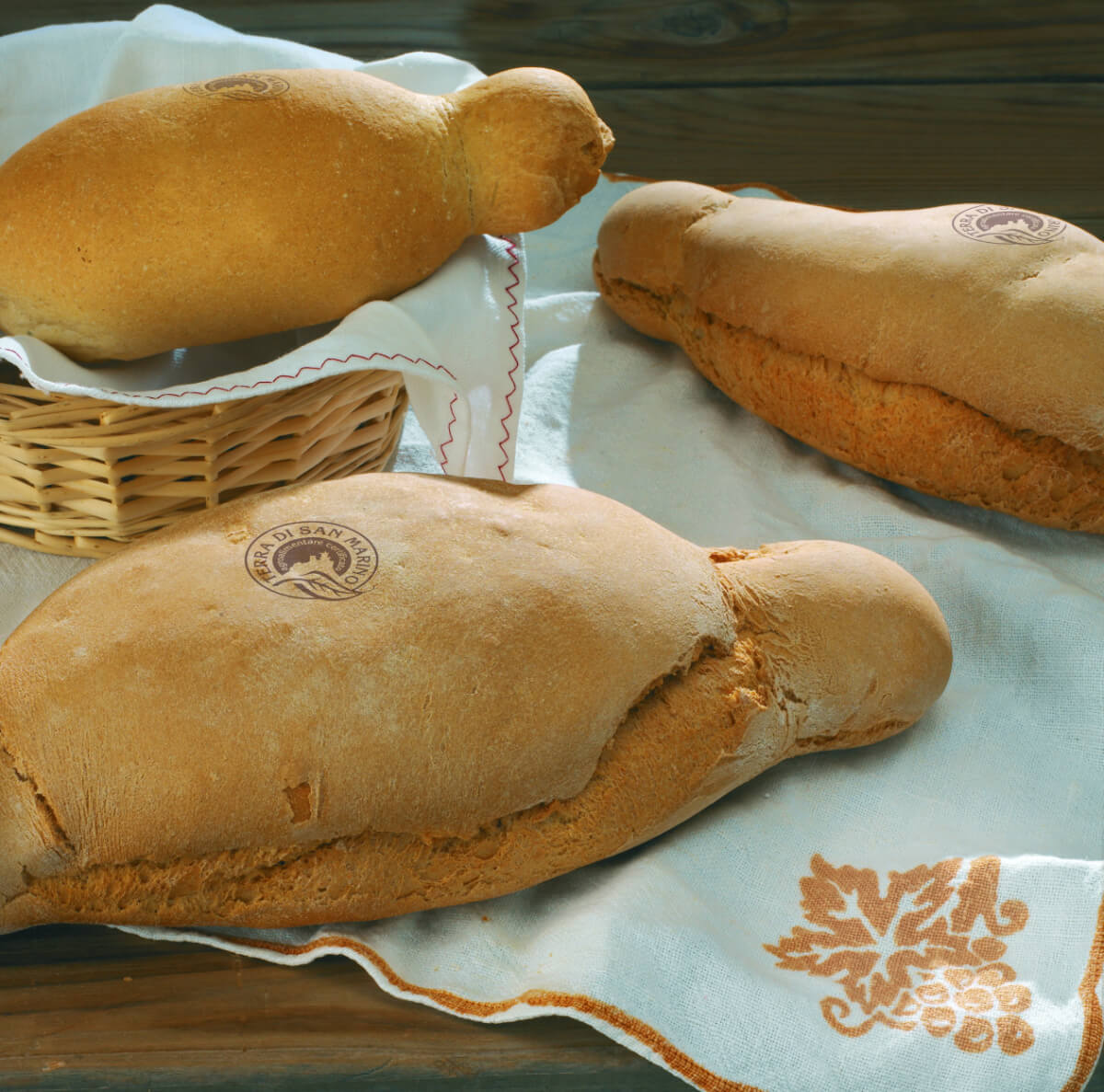
Oil and wine
The cultivation of vines and the production of oil has a thousand-year-old tradition.
Both are consumed as accompaniments to any dish by virtue of the two dominant characteristics that have been handed down through the years to guarantee a high-level product: quality and naturalness.
The Republic of San Marino is particularly suited to the production of oil of great nutritional value. Its special qualities come from a combination of well-balanced taste and smell sensations with distinct herbaceous notes and hints of bitter almond and artichoke. Extra-virgin olive oil is produced from olives of the typical varieties that grow within the territory of San Marino: Correggiolo, Brugnolo, Capolga, Sursina etc.
The excellent wines of the Consortium of Typical Wines accompany the lunches and dinners of the inhabitants of the Republic and tourists, red varieties including Brugneto and Tessano that mature in large cherry-wood barrels and the white wines as Biancale and Roncale.
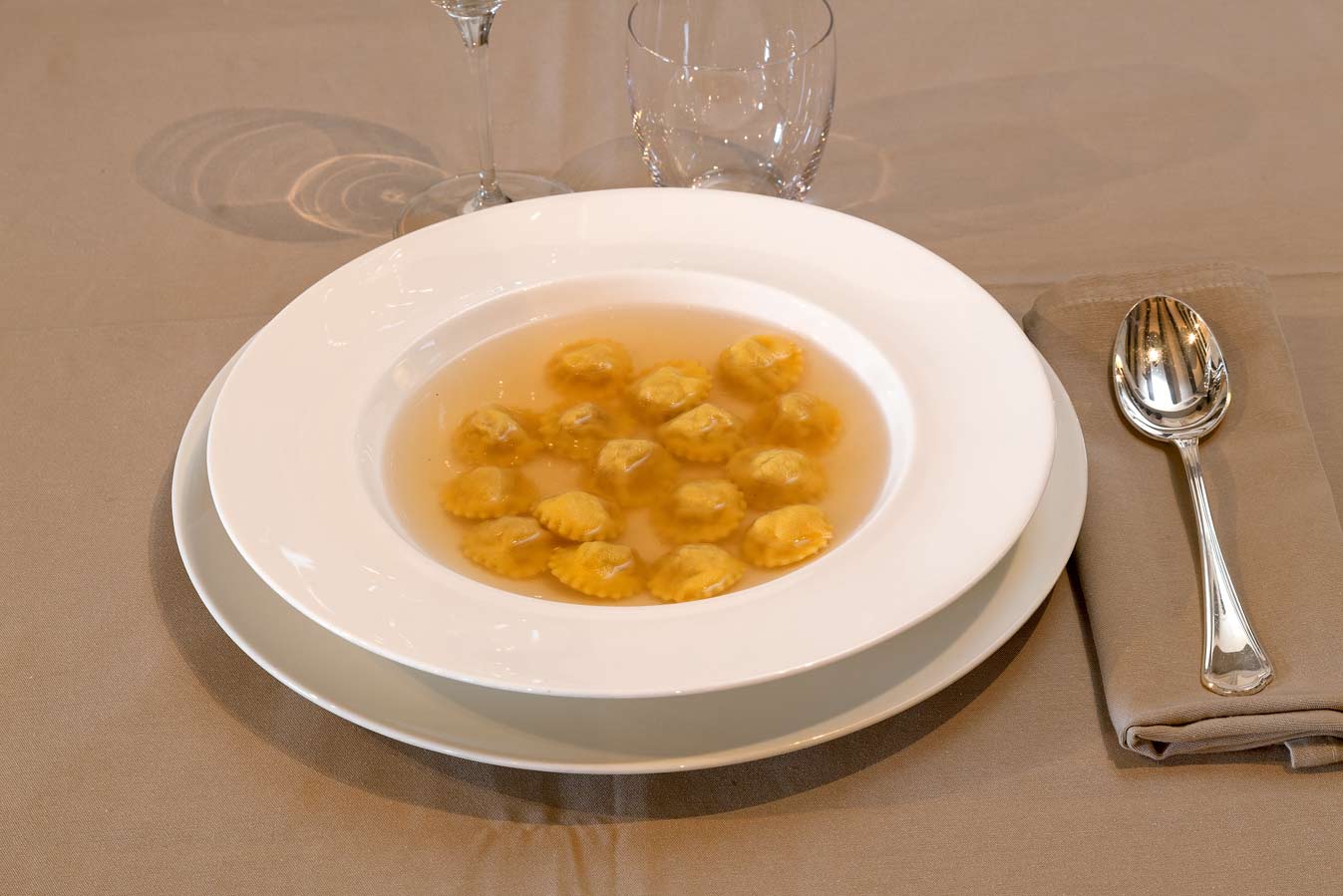
Traditional Sammarinese first courses
Fresh pasta is one of the most authentically traditional dishes of San Marino.
Tagliatelle, pappardelle, stringhetti and tagliolini were and continue to be served with meat sauce, sausage, peas, sea campion (plants collected from the fields), beans and game.
Other poor typical rural dishes are pasta and beans or pasta and chickpeas, ideal for providing the right amount of energy in the absence of meat and cold cuts.
Curiosity
What do they eat on Christmas Day in San Marino? Obviously cappelletti in brodo. On 24 December, however, tradition has it that pasta e ceci has to be on the table.
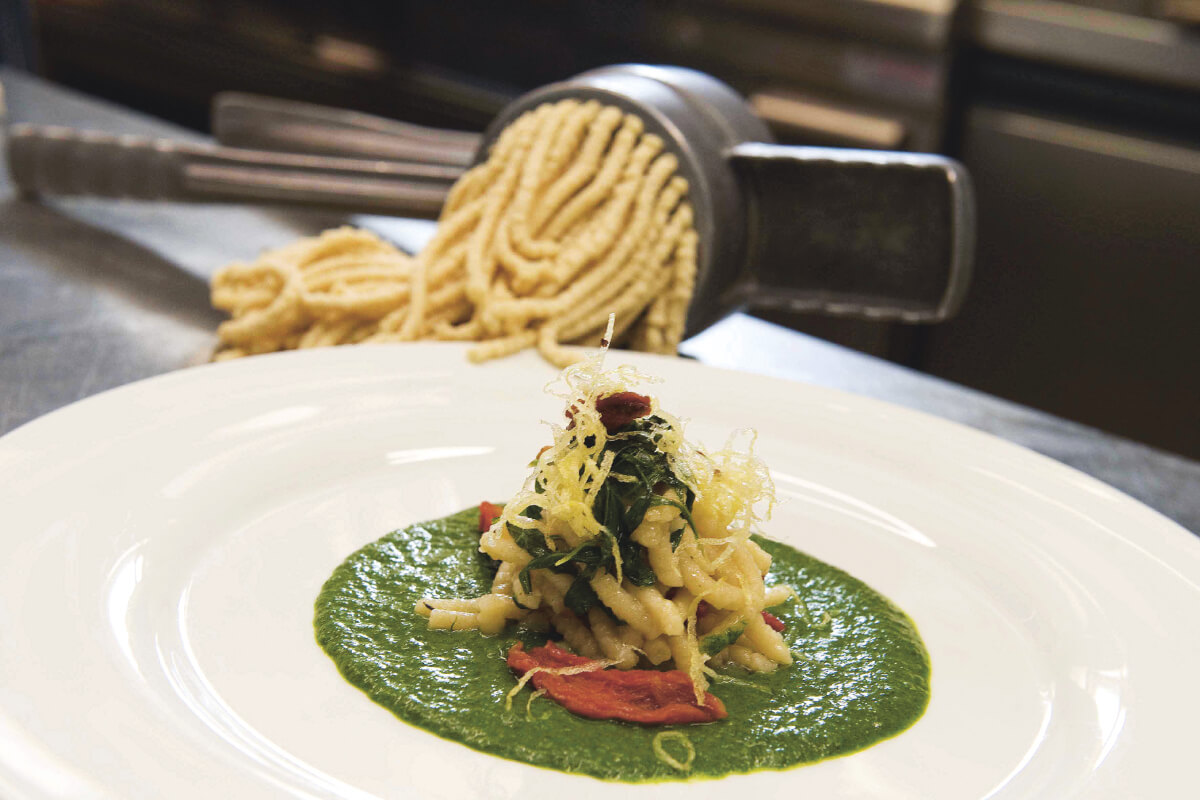
Traditional Sammarinese second courses
Apart from the cold cuts typical of the San Marino area, how can we fail to mention grilled meats, dishes that smell of milk and cheese, good homemade bread and the celebrated "piadina" which is the thinnest of all the variants from Emilia.
Curiosity
There is a passage in "Gastronomy in the Sammarinese traditions" that says: all the country folk owned at least one pig that they raised from September to January with household leftovers and poor food. In this way, meat and cold cuts were obtained for the whole year.
Did you know that, in ancient times, the dough of piadina was made not only of white flour and water but also of yellow flour and, on important occasions, of pork lard?

Traditional Sammarinese cakes
One of the oldest and most popular local cakes is the bustrengo: made with very poor ingredients, it was therefore never necessary to throw away food such as dry bread, milk waste after the production of cheese, and dried grapes.
Ranging from carnival fiocchetti, Easter bread with raisins and aniseed, ciambella (ellipsoidal doughnut without a hole and decorated with coloured balls of sugar, chocolate and raisins), the tasty Torta Tre Monti (large round wafers filled with cocoa cream and hazelnuts), Torta Titano (two layers of a pastry made with almonds, peanuts and honey with chocolate filling) and the piada dei morti (cooked at the beginning of November) you get to the casatello or cacciatello, one of those sweets whose recipe has been handed down from mother to daughter for hundreds of years.
We remember, with great pride, that the gastronomic traditions of the Republic are promoted through the “Terra di San Marino” Consortium which safeguards and protects small agricultural producers, local produce and the Republic’s enogastronomic identity.
The “Terra di San Marino” project, born to create a relationship of trust between producers and consumers through severe controls on the genuineness and authenticity of products to ensure maximum transparency for consumers, starts precisely from these basic principles.
